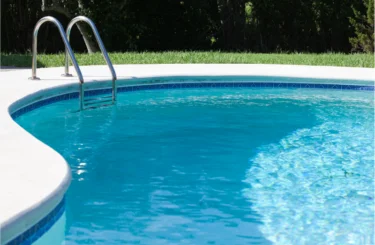
NBC News Spotlights Allegations of HUD’s Failure to Prevent Fatal Carbon Monoxide Poisoning Deaths
Because carbon monoxide is colorless and odorless, carbon monoxide detectors provide the only reliable means to identify the deadly gas in our homes. Despite the danger, the U.S. Department of Housing and Urban Development (HUD) does not require CO detectors in the 4.6 million affordable housing units it oversees, leading to the deaths of a Detroit husband and wife whose family retained Sommers Schwartz to pursue a wrongful death personal injury lawsuit.
The tragic story is featured in an exposé by NBC News:
Risks to Residents of Hickory Hollow and Other HUD Communities
Gwendolyn and Anthony Fleming lived at Hickory Hollow Cooperative, a federally subsidized housing complex in Wayne, Michigan. When one of their daughters went to visit the couple on February 1, 2019, no one answered, prompting her to call the police who then broke through a door. Anthony was taken to the hospital, but he never regained consciousness; Gwendolyn was pronounced dead on the scene. Both fell victim to carbon monoxide poisoning in their home.
In the week before, two other residents in the Hickory Hollow community went to the hospital after the fire department identified elevated CO levels in their home, and in 2016, a similar incident was reported in a Hickory Hollow apartment. On the night police broke through the Flemings’ door, fire officials evacuated families after detecting elevated carbon monoxide levels in 26 Hickory Hollow units across the complex. According to the incident report, one unit showed a reading of 500 parts per million, the maximum reading on the scale and more than three times the threshold at which disorientation, unconsciousness, and death can occur.
No HUD Requirement for Carbon Monoxide Detectors
As detailed in the NBC News feature, carbon monoxide is responsible for the deaths of at least 13 HUD housing residents since 2003, including two men who succumbed to CO poisoning in a
Columbia, South Carolina, public housing complex two weeks before the Flemings died.
While some state and local laws may require CO detectors, it’s not universal. In Wayne, Michigan, for example, the city requires detectors in homes when sold and in rental housing, which must be inspected every three years. As a housing cooperative, however, Hickory Hollow is not subject to the same rental inspection schedule, and the last time the city inspected the Fleming’s apartment was in 2007, before Wayne’s requirement took effect.
Regardless of local ordinances, HUD has no requirement for carbon monoxide detectors for the housing it administers, despite other mandates. When the Flemings’ property underwent a health and safety inspection in 2015, HUD gave it a score of 80 out of 100 – but identifying and checking CO detectors weren’t part of the review. Approximately one-third of Hickory Hollow’s residents – including the Flemings – receive HUD rental assistance.
HUD has been slow to confront the issue, and only last month indicated that it would draft its first rule to require carbon monoxide detectors. Ironically, Hickory Hollow is just a short drive from the childhood home of HUD Secretary Ben Carson.
HUD Isn’t the Only Party at Fault
Sommers Schwartz attorneys Michael Cunningham and Matthew Curtis represent the family of Gwendolyn and Anthony Fleming and are thoroughly exploring the circumstances surrounding the couple’s untimely deaths. While HUD’s failure to mandate the use of carbon monoxide detectors in public housing was a significant factor, accounting for the cause of the CO buildup was also important.
When fire department officials investigated the origin of the deadly gas, maintenance staff informed the emergency responders that ice had accumulated around chimneys throughout the Hickory Hollow complex, creating a “possible contributing factor to the CO levels” generated by gas-fired boilers in each of the 267 units. Responsibility for properly maintaining those chimneys for the health and safety of the residences falls on Huntington Management, the company that runs the property. In addition, a recent inspection by experts determined that poor maintenance, poor ventilation, and poor combustion from the old boiler led to these tragic deaths.
Although Huntington claims to have installed carbon monoxide detectors, no carbon monoxide alarms sounded in the Flemings’ apartment when the fire department arrived, and fire department officials indicated that detectors were not present in two other apartments in the Flemings’ building – apartments that also showed elevated carbon monoxide levels.
Injuries and Death from Carbon Monoxide Poisoning
Symptoms of carbon monoxide poisoning include headache, nausea, dizziness, chest pains, and confusion. When inhaled, carbon monoxide prevents red blood cells from carrying oxygen, and the greater one’s exposure to the dangerous gas, the higher the risk of injury. Besides the risk of death, long-term effects may include neurological problems such as memory issues, movement disorders, and disturbances in mood, behavior, and language.
If you or a loved one has experienced carbon monoxide poisoning in the Hickory Hollow complex or another HUD community, please contact us today to discuss your situation.
Michael J. Cunningham
For the past 30 years, Mike has been enormously successful in representing plaintiffs in medical malpractice, auto accident, and premises liability cases. Much to the dismay of his adversaries, Mike has obtained countless verdicts and settlements in excess of $1 million.






